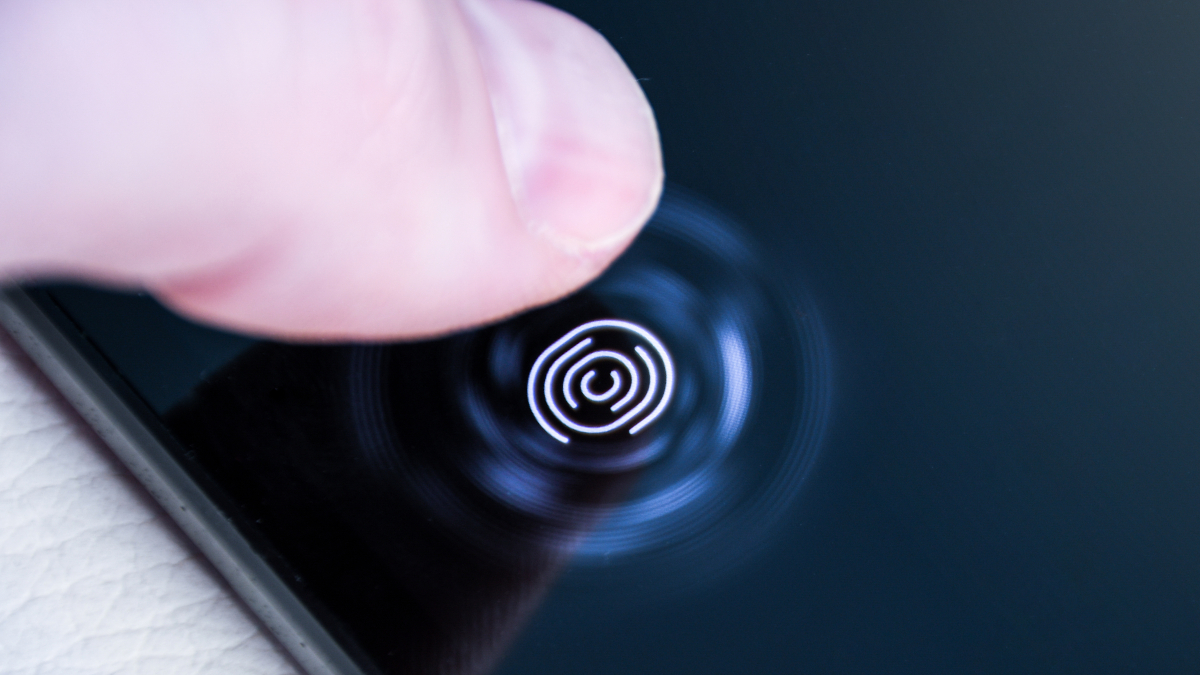#The Dream of In-Display Fingerprint Scanners Is Dead

Table of Contents
“The Dream of In-Display Fingerprint Scanners Is Dead”

Under-display fingerprint scanners were supposed to be great. Just put your finger on the touch screen like you would anyway, and a built-in sensor unlocks the phone. That was the dream, but in reality, they’re worse than the alternatives.
A Brief History of Fingerprint Scanners

Fingerprint scanners first appeared on smartphones in the 2010s. Apple launched the iPhone 5S with a fingerprint scanner in 2013, and Samsung followed suite with the Galaxy Note 4 a year later.
These first fingerprint readers were using capacitive technology. The sensor is covered in tiny electrodes, and the capacity between the electrodes is how your fingerprint is scanned. It changes depending on the distance between ridges on your finger.
By the end of the 2010s, the vast majority of smartphones included fingerprint scanners. However, change was coming. Apple started moving toward facial recognition with Face ID in 2017. Meanwhile, Android manufacturer Vivo was implementing the first in-display fingerprint scanners.
Nowadays, Apple has all but abandoned fingerprint scanners for Face ID—only the “retro” iPhone SE has Touch ID. There are still many Android devices with the original type of fingerprint scanner, but in-display scanners have become mainstream on “flagship” Android phones.
RELATED: What Is Face ID?
The Promise of In-Display Fingerprint Scanners

The first smartphone with an in-display fingerprint scanner, also called an under-display fingerprint scanner, was the Vivo X20 Plus, launched in early 2018. It used an optical scanner, which shines light on your finger and takes a photo of it with a tiny camera.
I remember being very intrigued by this new concept. At the time, it was still pretty common for fingerprint scanners to be on the front of phones, positioned on the bottom bezel. An in-display fingerprint scanner allowed it to still be on the front, but not take up space on the bezel.
It felt like a very futuristic feature. How cool is it to just put your finger on your phone’s display and it automatically scans your finger and unlocks? No fiddling around for a specific spot on the bezel or the back of the phone. Just touch the display!
Of course, that’s not how the first in-display scanners worked at all. You did have to put your finger on a very specific spot, usually indicated by a fingerprint icon on the screen. They were also much slower than the “old” style fingerprint scanner.
That was okay, though. Bleeding edge technology always has its problems, but the potential is exciting. I could envision a future where you don’t have to put your finger in a very specific spot and wait a second for it to be scanned. A future where simply swiping the lock screen is all it takes to scan your finger.
The Future We Got Instead

Let’s fast forward to today, the year 2022. High-end Android phones are still being launched with in-display fingerprint scanners. Samsung has been using the technology since 2018. Google didn’t adopt in-display scanners until the Pixel 6 in 2021.
The technology has improved in the last five years. Optical in-display scanners, which don’t have the best security, have slowly been replaced with ultrasonic in-display scanners. They use ultrasonic pulses to map your fingerprint.
The problem is these improvements haven’t been big enough. Using an in-display scanner in 2022 is not as significant of an upgrade over 2018 as I would have expected. In fact, I would argue they’re still nowhere near as good as the “old” style fingerprint scanners.
For example, the Galaxy S22, Samsung’s latest and greatest flagship smartphone series, features in-display fingerprint scanners. You’d think it would be good by now, right? Of course, different people will have different experiences, but it’s borderline unusable for me.
I very regularly have to place my finger on the scanner three or more times before it registers. It’s gotten so frustrating that I’ve enabled Samsung’s facial recognition feature, which is still not as good as Apple’s Face ID. If it wasn’t for Android’s “Smart Unlock” feature, this would be bothering me even more.
RELATED: Google Tries to Justify Pixel 6’s Slow Fingerprint Scanner
Embrace the Face

Apple seems to think facial recognition is the future, and having used Face ID, I think I agree. The potential of under-display scanners seemed great, but the real-world implementation has left much to be desired.
It’s been nearly five years since the first in-display scanner appeared on a smartphone. Why are they still being outperformed by old-style scanners on budget Android phones? If Android manufacturers don’t want to use the old-style scanners, their focus should be put on competing with Face ID.
In my experience, Face ID is just as fast and reliable as an old-style fingerprint scanner. It’s certainly not perfect—it’s less accurate while wearing a mask, for example—but it’s very good. The big benefit of Face ID, however, is that it’s actually secure.
On iPhones, Face ID can be used as a security measure for things like making purchases in the App Store. That’s not the case for facial recognition features on Android phones. If you opt to use that method on the lock screen, you’ll need a secondary security method for purchases and other things.
The dream of a phone with an entire touch screen that can scan your finger was nice, but it hasn’t happened. At this point, I’m not sure we’ll ever get there. It’s time to move on to something better.
RELATED: How to Use Face ID With a Mask on iPhone
If you liked the article, do not forget to share it with your friends. Follow us on Google News too, click on the star and choose us from your favorites.
For forums sites go to Forum.BuradaBiliyorum.Com
If you want to read more like this article, you can visit our Technology category.




